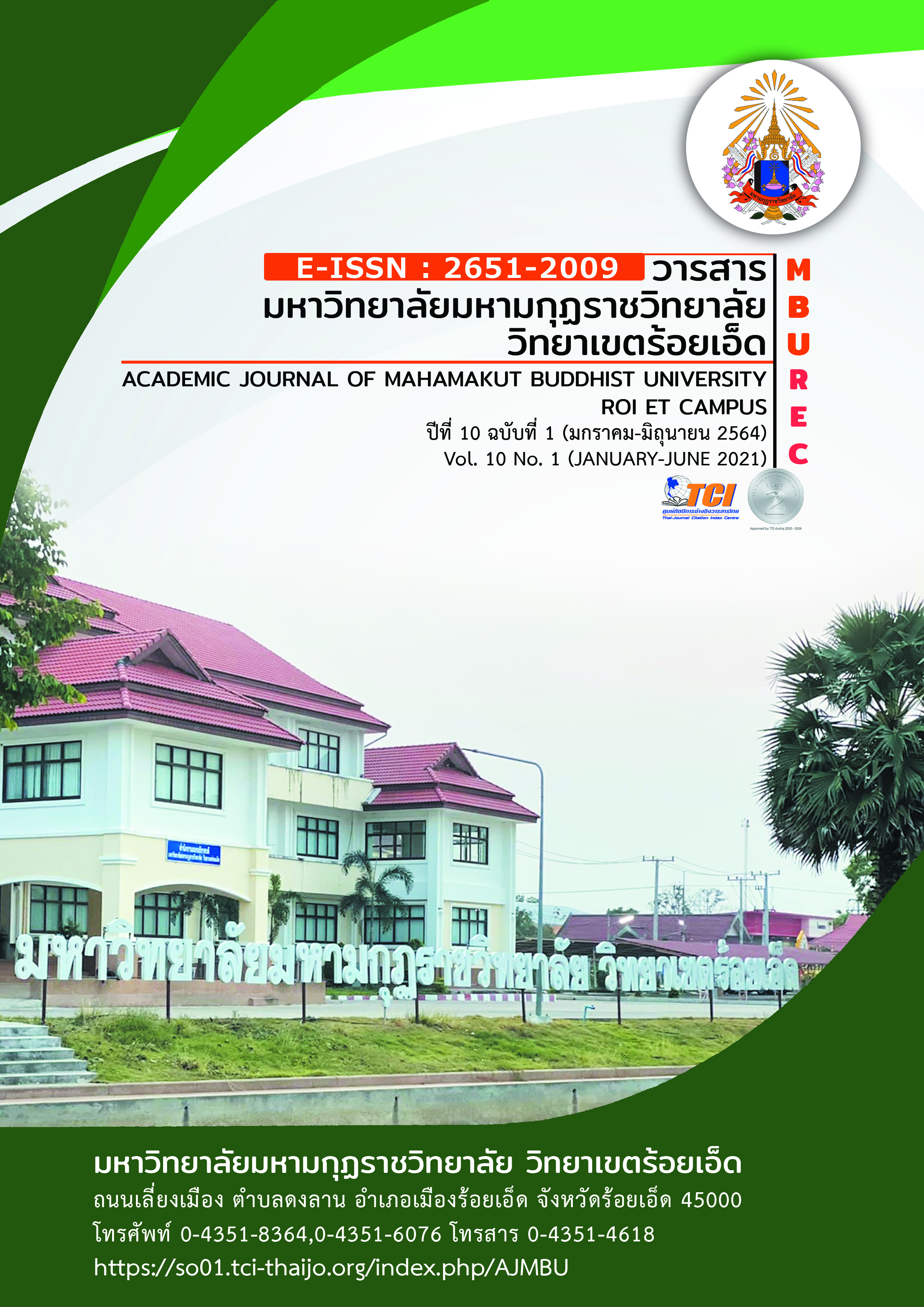Creating Innovations for Dharma Camp Training for Thai Youth in the 21st Century
Main Article Content
Abstract
The objectives of the research article were 1) to develop the innovation as such, 2) to assess its effectiveness and try it out on sampling groups. The sampling groups comprised 400 students. The research tools in research are innovation, Dharma training camp and innovation quality assessment form.The statistical units utilized for processing data include arithmetic means and standard deviations.
Research findings are the following: 1. Developments of the said innovation have begun with data collections relevant documents. Outcomes of analyses have shown close relations between the Buddha’s heading (Bala, strength) and students’ age spans to constitute the said innovation. Later, each of activities was selected in accordance with objectives of every task. Every activity focuses on increasing aspects of physical, emotional, social, and cognitive developments. All activities enable trainees to use in everyday life. 2. Three experts’ outcomes for seeking its effectiveness of the aforesaid innovation have been revealed rating at the most appropriate level. Likewise, trainees’ satisfaction with the same innovation has been placed at the most level.3. Outcomes of trying out in (1) the ‘close friends in need’ have shown trainees can retain their concentration for very long after a couple of lecturer’s time, enabling trainees to keep going smoothly. As a result, the feast causes them to share and exchange their responses. In (2) unity pens, trainees have paid their utmost attention to the lecturer and to steps of doing activities; helping them plan their assigned tasks continually.Therefore, they can maintain their concentration in doing their activities. More importantly, they have expressed mutual unity and accepted others’ opinions. In (3) clear and sincere mind, trainees can do their activities rapidly. Through procedures of helping friends, they can help keep steps of continuing activities rapidly. In doing so, they share and exchange their views on learning between them. Therefore, it brings about practical methods of a new format which the trainees have applied. Practically, trainees have been considerably interested in this activities.
Article Details

This work is licensed under a Creative Commons Attribution-NonCommercial-NoDerivatives 4.0 International License.
References
ประเวศ วะสี. (2545). ยุทธศาสตร์ชาติเพื่อเอาชนะความยากจน. กรุงเทพมหานคร : สำนักงานกองทุนเพื่อสังคม.
พระธรนิส มั่นคงทรัพย์. (2539). การศึกษาความสัมพันธ์เชิงจริยธรรมระหว่างครูกับศิษย์ตามคำสอนทางพระพุทธศาสนาในสถาบันการศึกษาระดับมัธยมปีที่ 6 ศึกษาเปรียบเทียบ : โรงเรียนสวนกุหลาบวิทยาลัยกับโรงเรียนสตรีวิทยาลัย เขตพระนคร กรุงเทพมหานคร. วิทยานิพนธ์ปริญญามหาบัณฑิต. มหาวิทยาลัยมหิดล.
รังสรรค์ สิงหเลิศ. (2551). ระเบียบวิจัยทางสังคมศาสตร์. มหาสารคาม : มหาวิทยาลัยราชภัฏมหาสารคาม.
สมนึก เอื้อจิระพงษ์พันธ์ และคณะ. (2553). การจัดการความรู้กับนวัตกรรม. กรุงเทพมหานคร : สามลดา.
สุดาวรรณ เครื่อพานิช. (2553). การเรียนรู้ผ่านกระบวนการค่าย. วารสารวิชาการ. 13(1). 5-7.
อมรวิชช์ นาครทรรพ. (2547). การเรียนการสอนที่มีการวิจัยเป็นฐาน. พิมพ์ครั้งที่ 3. กรุงเทพมหานคร : คณะครุศาสตร์ จุฬาลงกรณ์มหาวิทยาลัย.
อานันท์ กาญจนพันธุ์. (2544). วิธีคิดเชิงซ้อนในการวิจัยชุมชน : พลวัตและศักยภาพของชุมชนในการพัฒนา. กรุงเทพมหานคร : สำนักงานกองทุนสนับสนุนการวิจัย.
Alvin Toffler. (1995). The Third Wave. New York : Bantam Book.


